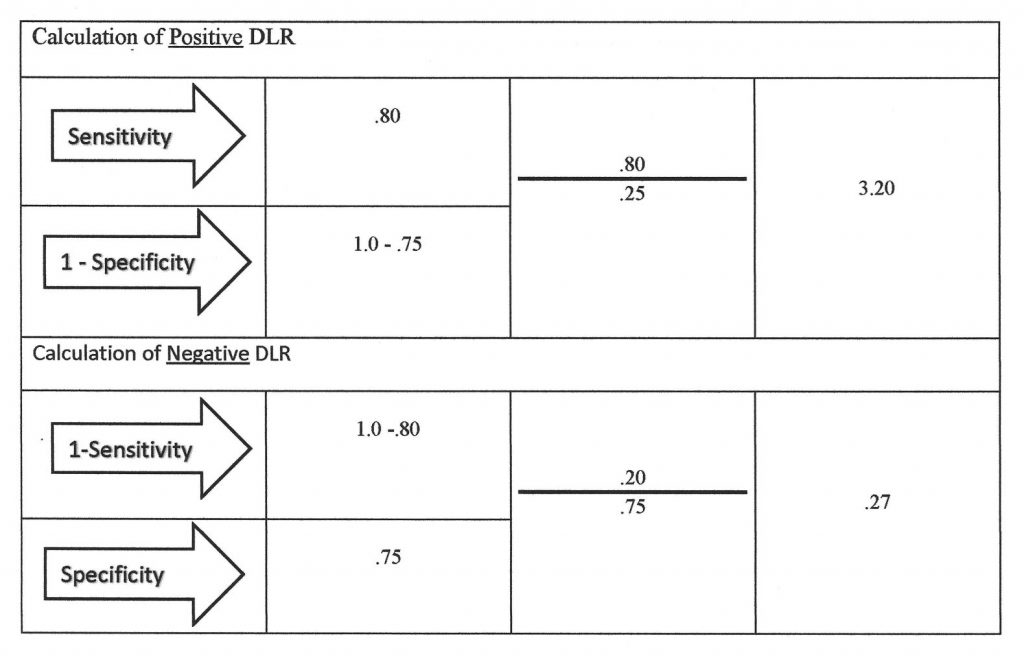Appendix B: How to Calculate Diagnostic Likelihood Ratios (DLRs)
In Chapter 1 you learned that when the CAS was applied to a study predicting ADHD that a value for sensitivity and value for specificity resulted (Canivez & Gaboury, 2015). Specifically, sensitivity in this study was found to be .80; specificity was found to be .75. Now, two Diagnostic Likelihood Ratio (DLRs) can be calculated. DLRpositive is calculated by Sensitivity/1 – Specificity. As the simple calculation below shows, the value using this sensitivity and specificity would be 3.2. This indicates how much a pretest probability is boosted in the presence of a positive CAS score. In cases where there is a low pretest probability, a large boost would result. In cases where there is a high pretest probability, a more modest boost in posttest probability would result. The probability nomogram handles the non-linear nature of the relationship between pretest and posttest probability, so you do not need to perform any calculations after you have figured out DLRs.
In turn, DLRnegative is calculated by 1- Sensitivity/Specificity. As the figure indicates the value from this illustration is 0.27. This indicates how much a pretest probability is diminished. If there is a high pretest probability, then this DLRnegativevalue would create a greatly reduced posttest probability. But if there was already a low probability, this DLRnegative value would only lower the posttest probability a little (the relationship is non-linear). These general bumps up or drops down in pretest probability can be made exact by application of Bayes rule.

